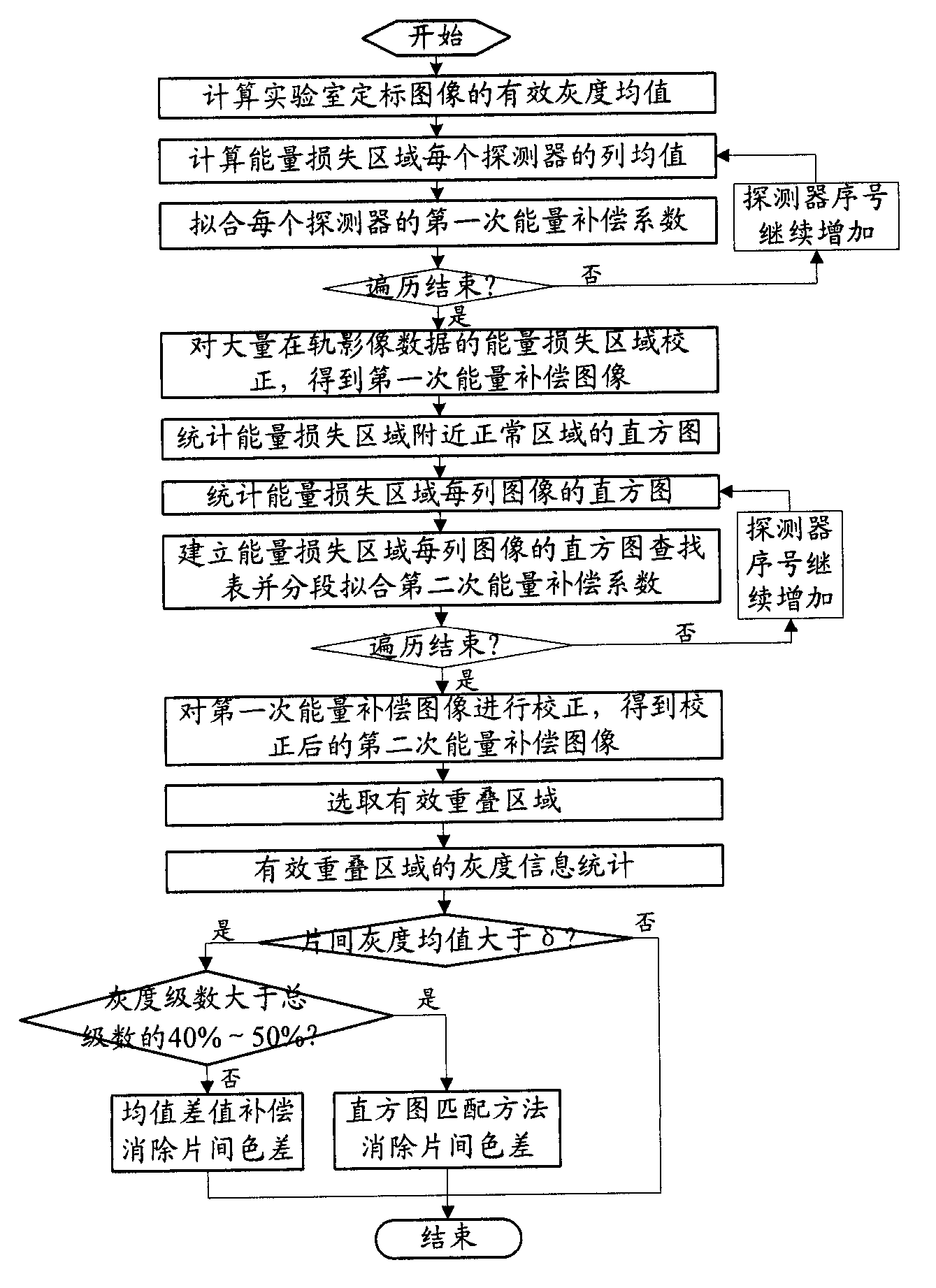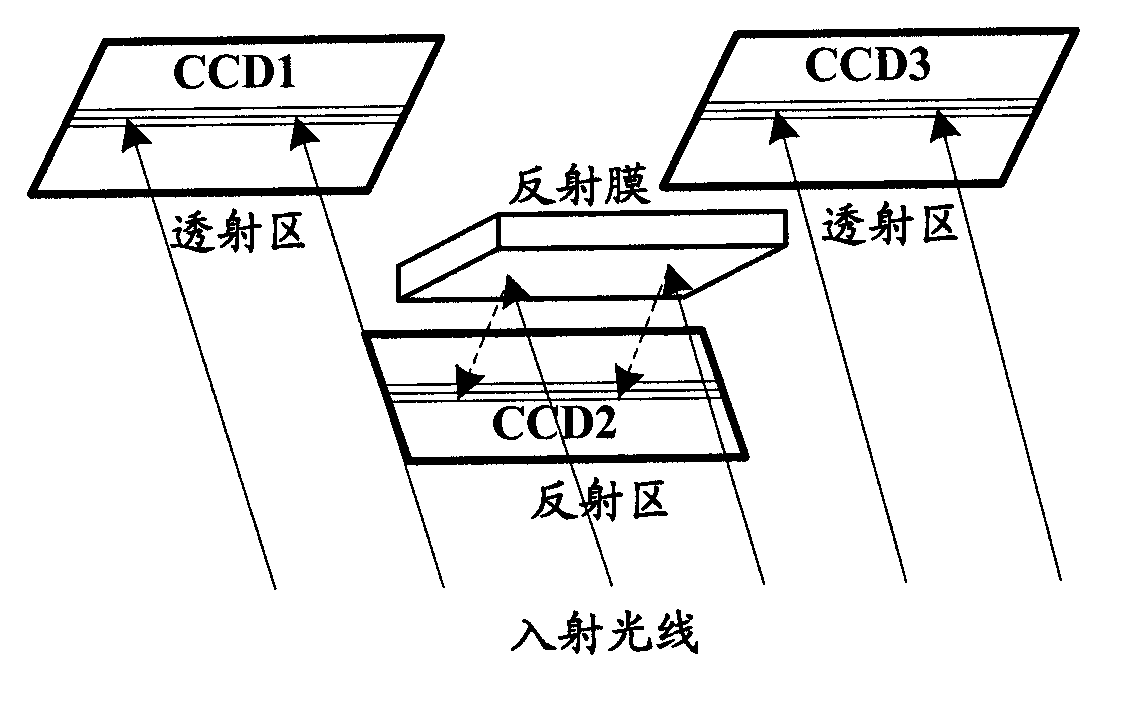Energy compensation and chromatic aberration removal method for total-reflection optical splicing cameras
A technology of energy compensation and optical splicing
- Summary
- Abstract
- Description
- Claims
- Application Information
AI Technical Summary
Problems solved by technology
Method used
Image
Examples
Embodiment Construction
[0041] A method for energy compensation and chromatic aberration elimination of a total reflection optical stitching camera, the specific processing flow is as follows figure 1 Shown:
[0042] 1. Calculate the effective gray value of the laboratory calibration image
[0043] Such as figure 2As shown, the optical camera is composed of three linear array CCD1, CCD2 and CCD3, and the overlapping purpose is achieved by the total reflection optical splicing method between two adjacent pieces. Due to the existence of the total reflection film of the total reflection optical splicing camera, the converged light is blocked, and some of the converged light does not reach the detector at the edge of the splicing, and the intensity of the light will strengthen and return to the normal value as it moves away from the edge. CCD1 and CCD3 receive transmitted light, while CCD2 receives reflected light. An energy loss area is formed between CCD1 and CCD2 and between CCD3 and CCD2. The widt...
PUM
 Login to View More
Login to View More Abstract
Description
Claims
Application Information
 Login to View More
Login to View More - R&D
- Intellectual Property
- Life Sciences
- Materials
- Tech Scout
- Unparalleled Data Quality
- Higher Quality Content
- 60% Fewer Hallucinations
Browse by: Latest US Patents, China's latest patents, Technical Efficacy Thesaurus, Application Domain, Technology Topic, Popular Technical Reports.
© 2025 PatSnap. All rights reserved.Legal|Privacy policy|Modern Slavery Act Transparency Statement|Sitemap|About US| Contact US: help@patsnap.com



